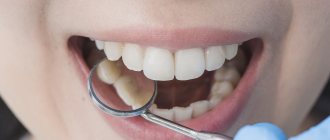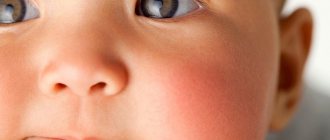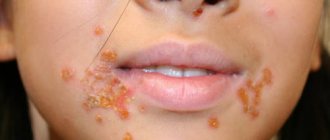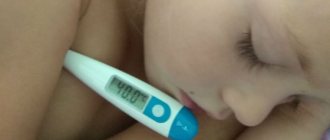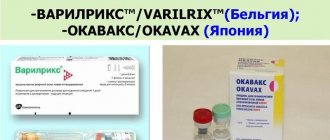Author:
- Golonova Yulia Yurievna
otorhinolaryngologist, clinic director
5.00 (Votes: 1)
If your family has a wonderful baby aged from one year to 3-4 years, and sometimes a little older, then this story is for you. Experienced mothers who have gone through this age period with their children more than once, of course, know the peculiarity of this inquisitive age, the age of discoverers and naturalists, who strive not only to study all the new objects around them, but also try to immediately find a use for them, which sometimes ends, including the appearance of foreign bodies in the nose.
Considering the physiological characteristics of the nasal cavity, the reaction of the mucous membrane to a foreign body in the form of swelling and inflammation, it becomes wedged very quickly, which leaves no chance to get rid of it naturally.
That is why we pay attention to this problem of parents. After all, an undetected foreign body in a child’s nose can cause purulent inflammation and complications.
"Chop" how much? History of blowing or cheating
In Dagestan, a method from the arsenal of traditional medicine – chop removal – has long been popular.
The essence of the procedure is that the chop removal specialist, usually a woman, blows through the patient’s nasopharynx with his mouth through the nostrils and, using air pressure, pushes out the stuck foreign objects, which “fly out” through the patient’s mouth. Most often, the clients of “chopchi”, as they are called, are children. The child has a poor appetite, fever or other slightest manifestation of malaise - and some mothers immediately rush to healers who remove chops, which they learn about from relatives, friends or from advertisements posted around the city.
Molodezhka, with the help of certified doctors, tried to figure out whether this method really has a healing effect.
The word "chopchi", as described in Wikipedia, means "gatherer of brushwood" or "the art of blowing lumps."
This is a healing practice in traditional Azerbaijani medicine, which consists of “blowing” out of the throat and nose of children and adults pieces of food stuck there or carelessly swallowed small objects (seeds, bones), which, according to belief, can cause illness in children, cause vomiting, feeling unwell, high fever, diarrhea.
To blow or not to blow?
A Molodezhka correspondent found people who have experienced “chop removal” themselves.
Malaikat Mansurova encountered such a problem as a security guard at the age of 24. She didn’t believe it, she says, but it turned out to be true. There were no symptoms, only a feeling of heaviness in the throat and bad breath.
– I saw an otolaryngologist. The doctor said there was redness and prescribed rinses and antibiotics. After treatment, the discomfort in the throat did not go away. I don’t know, maybe I got an incompetent doctor. I don't dare to judge. I often heard the common diagnosis in our republic - chop, but did not believe that this could happen in adults.
Out of desperation, I decided to go, especially since a woman lived not far from us who cleans them. To be honest, I didn’t know how the process itself went. She sat me down on a chair, massaged my throat hard, until sparks came from my eyes, and blew into my nose! At that very second, a swollen sunflower seed and a small chicken bone flew out of my mouth. To say that I was shocked is to say nothing.
Since then I began to believe. How can you not believe it if you’ve experienced it yourself?
***
The grandmother of schoolboy Abdulla Khanumaga Mirzegasanova says that once they had to “kidnap” the boy from an infectious diseases hospital in the middle of the night and take him to a healer whom a neighbor praised.
“He was two years old then.” The child was burning all over, the temperature did not subside, he was vomiting and swearing. Abdullah's mother gave it to us through the transfer window at the hospital. And so we, my grandparents, took him to clean up the chop. Somehow they begged us to be accepted. The healer was already asleep, but she came to her senses.
I blew out a piece of meat and cucumber. This woman told us to eat the yolk of a hard-boiled egg to speed up the healing. And we took the boy back to the hospital. The next day, the child ate the entire can of pilaf that his mother brought for him and him. The temperature subsided and he recovered.
Illustration: rhinos.rf.
***
The mother of three-year-old Amir Tamila Abdullaeva tells her story.
– I heard that there are charlatans who build businesses on children’s chops. They have a fixed rate - 400 rubles. Usually blowers take as much as you give them.
And they give you 100-200 rubles, but you go to them often. It’s the charlatans who get hooked on the “chronic” crisis, because the more often you apply, the more they profit.
If you go to them every week, I think you need to look for the cause of the disease no longer in the chop itself...
But one day my son Amir began to feel unwell: he stopped eating, was losing weight before our eyes, and was acting up. When the temperature rose and the child became completely weak, she called an ambulance. The medications prescribed by doctors did not help, and I decided, as it seemed to me then, to take extreme measures. Based on the advice of people like me, my mother found a healer right away.
I apologize for the naturalism, but after she blew out clots of sputum with rot and a piece of apple from the child, he, having cried and calmed down, began to recover. He immediately asked me to eat. A week later I regained my previous weight. She took as much money from us as I gave myself, that is, she did not have a fee. I don’t know if we were lucky or what, but we came across a good blower.
Fortunately, such troubles did not happen again.
***
Imara Atlukhanova said that just the other day she took her child to clean up the chop.
“We visit her more often than our relatives—almost every week.” Two children - one gets stuck on something, then the other. They say this happens until the age of five. I don't know if this is actually true. The day before yesterday we blew out six pieces of cucumber. After this my appetite returned instantly!
Initial examination
– I do not welcome the method of removing a chop by blowing and do not recommend turning to such “healers”, although there is a category of people who are sure that you should always use so-called folk methods. This is their opinion, their right,” says therapist Khanum Aliyeva.
– It will not be difficult for an ENT doctor to reliably establish whether there is something in the nasopharynx. As a therapist, for any manifestation of any symptoms, I recommend turning not to amateur healers, but to specialists, because treatment does not end with the so-called blowing.
There should be an initial examination of the nasopharynx by a pediatrician and pediatric otolaryngologist, who will make a diagnosis and prescribe treatment.
Lorklinika1.ru.
The respiratory tract is at risk
Pediatrician Madina Ismailova also does not support, as she says, “these dubious methods.”
- Is it dangerous. Blowers can blow stuck particles into the respiratory tract, and the child may simply suffocate or end up on the operating table. I had a case where such “miracle doctors” blew nuts and wild onions into the lungs, and the child needed a bronchoscopy. Pulmonary atelectasis may occur. All this entails longer treatment and severe consequences.
To be honest, at the reception, some mothers admit that they have already been to the “healers”, but after they cleared, only complications began.
And in general, haven’t you thought about the fact that this person who is blowing the air could be infected? From any point of view, this is unethical, unaesthetic, unhygienic and unsafe.
Not a single doctor will recommend the method of blowing or purging, but, unfortunately, our people have such a mentality: they no longer listen to doctors, but to word of mouth - neighbors, girlfriends, acquaintances... A medical alternative to these “swindlers” is an examination by a competent therapist and otolaryngologist in under sterile conditions.
pilmohealth.com.
ENT to help
Otolaryngologist Semed Javadov believes that it is impossible to blow out small bones from fish or chicken, because they stick into the mucous membrane.
– Remember the expression: when I eat, I am deaf and dumb? Why can't you eat and talk at the same time? Because food is thrown back into the nasopharynx, when inhaling, for example. As an ENT specialist, at the first suspicion that something is stuck in the nasopharynx, I advise you to come to an appointment.
Do not look for solutions from any charlatans, they will not help you. First we need to find out the reasons why this happened. If this is a mechanical action (childish curiosity, careless inhalation, talking while eating), then the specialist will simply pull out all the excess from the nasopharynx.
If the cause is a disease, it will be necessary to undergo a course of treatment.
Help or quackery?
Doctor of Medical Sciences, chief otolaryngologist of the Ministry of Health of Dagestan Yunuskadi Dzhamaludinov says that chopchi has been known for a long time, but their services have become especially popular recently.
– Many people appeared who called themselves healers. But to me, they are charlatans. Imagine the complex anatomical structure of the nose, nasopharynx and oropharynx.
In addition, you need to know physiology.
When these charlatans undertake to help poor people, they psychologically influence them (and they are well versed in the methods of psychological influence), suggesting that this is actually an easy path to recovery.
I used to work at the Republican Clinical Hospital. There was a general section for children and adults. We came across difficult cases. “Chop players,” instead of blowing out/removing the foreign body, only made everything worse. The foreign body passed further into the respiratory tract.
So we had to extract it with special tools. Bronchoscopy is usually performed here.
At that time, this intervention was quite crude: we had to use a metal bronchoscope to climb even into the lower sections of the respiratory tract and pull out some watermelon seeds and everything that they blew out and that got stuck in the small bronchi. Sometimes we even had to open the trachea...
Now there are new endoscopes, and it is much easier to do this. The endoscopic system allows you to take an image of any part of the nasal cavity. Even the narrowest places can be reached with an endoscope and everything can be illuminated and seen on the screen in an enlarged form.
I can invite any of these charlatans: let them bring the patient, first we will examine his nasal cavity and nasopharynx with an endoscope. And I will show them that there is nothing there and cannot be. They invent this themselves.
Just in case, they always have any foreign body in their pocket. They talk to the patient in advance, distract them, and at the right moment they pull out what they need. And then they pass it off as the “results” of their work.
Most often it is an apple peel, a piece of banana, pear, watermelon seed, piece of paper, cotton wool... You name it.
In general, there is no explanation for this other than sleight of hand.
Regina Kurbanova
Source: //md-gazeta.ru/obshhestvo/74720
Diagnostics
If parents suspect that their child has ADHD, they should consult a pediatric neurologist. The doctor will prescribe the appropriate examination that needs to be completed. Indeed, more serious pathologies may be hidden under the symptoms of hyperdynamic syndrome. Diagnostics includes three stages:
- The doctor collects data on the child’s behavior and reactions , the characteristics of pregnancy and childbirth, previous diseases, and hereditary pathologies of family members.
- Conducts special tests and evaluates the results and the amount of time spent, as well as the reaction and behavioral characteristics of the child. Usually such tests are carried out for children 5-6 years old.
- Electroencephalogram . This examination assesses the condition of the child's brain. It is painless and harmless.
After receiving all the results, the neurologist makes a diagnosis and gives his conclusion.
About security in children's institutions. A little look from the inside
Although I work in a different area of security, one day the security guard who guards the school in our private security company fell ill, and I was asked to come in for one shift and replace him. What I saw:
The school has 1500 children in 2 shifts. And I'm alone. It's impossible to keep track of everyone.
There are metal detector frames, but they are for show and generally it is not clear why.
When the food is delivered, I have to stand by the car and look to see what... But I don’t know what I’m supposed to look there. According to the instructions, he must be present during unloading and accompany the car to the gate. And the fact that at the same time the post (checkpoint, the main entrance, that is) without security does not bother anyone.
Every hour I have to go around the school and check whether the vile ISIS members (banned on the territory of the Russian Federation) have planted a bomb. The post is again unattended. And leaving to go to the toilet is a crime, because I left my post.
I understand parents who are not allowed to go to school - this is their child, they want to know what is happening at school.
Plus, they were in full swing preparing for the talent competition, about 500 parents came in and out during the day, and I repeat, alone. I stopped writing them down in the journal in the first half of the day, just for show.
I just need to go to the toilet - that would be a violation. I’m kind of leaving, no, not like that, I’m leaving my post. At one's own risk.
In the morning, when I came for my shift, together with a security guard, a group of 5 accountants stood as a wall at the entrance, turning away parents. From the outside it looked as if you had come to the CIA headquarters.
But the next morning, at the end of my shift, one mother harshly trolled this stupid, ostentatious system: she took out an unfolded passport, much like American police officers take out their badges in action movies, said that she had the right to accompany the child, her husband turned on the camera and she calmly passed .
I didn’t even write it down in the visit log, I just found it funny because of the evil-looking teachers. In general, these moments amused me. I just stood and watched this circus, as parents squabbled with teachers. It was funny.
There are some children who have diabetes. How can I not let my parent in? Of course, I ignored these rules and skipped them, writing them down in the visitor log. Because the administrator on duty was not there (she should accompany visitors around the school, but if she accompanied everyone, this would require a whole staff of duty administrators).
There are also children who cannot undress themselves. But that's not the question. And the question is why parents cannot help a child if he is not able to. Grandparents came to pick up their grandchildren 15 minutes before the end of classes (again, I don’t want to judge why, they wanted to come earlier).
The hall is full of benches and various armchairs, but no, I don’t have the right to let them in and they are standing in the vestibule in 30 degrees below zero.
I don’t understand all this strictness and access control regimes - it’s all for show. Someone has already correctly written that this is all in order to relieve oneself of at least part of the responsibility.
If something serious happens and the school administration turns on the parrot Kesha, “What are we, we’re nothing, it’s the security guard who should monitor the access control, we pay them money, and they’re lazy, idle, punish them.”
By the way, my teachers told me: “It’s your responsibility, why should you and I stand here and unwrap our parents and freeze our precious little feet. They pay you a lot of money, and we are teachers.”
And to my question, how am I supposed to single-handedly let 1,500 children a day in and out (even though it’s impossible to remember them all) to about 500 parents who love to quarrel (just imagine quarreling with everyone, that’s what nerves you must have) plus various visitors (inspectors, food delivery, technicians, electricians), plus watching the gate when the products are delivered, they told me “your problems, you are paid, so solve them.” And the fact that I’m not a wizard and the fact that they pay us for protection, I won’t be able to provide them with security at the level of a secret military base, they don’t care. The contract amount is 1.5 million rubles (I found out from a folder with official documentation). This includes a fire alarm, panic button and maintenance of all security systems, including cameras. All inclusive type. Many will think - a lot. But if you count: the security guard’s salary, taxes, deductions, the maintenance of the State Security Bureau, gasoline (after all, according to the instructions, the security guard is obliged to press the button at the slightest provocation), the salary of other employees (accountants, personnel officers, security engineers) does not come out that much, I would say it remains meager net profit. Yes, yes, my naive friend, 1.5 million wooden ones is not a lot in our time, if you want security at the level of Fort Knox. The only reason why Chops like to work with schools and kindergartens is that they pay on time and without delays. We signed the certificate of completion of the work and the next day the money was in our pocket (in our current account).
Who wrote: “So what should we leave now without any security at all?” Here, as the singer Maksim sang, my answer is yes. Seriously. For the first time in 5 years of working as a security guard, I felt like I was useless, present in this place, simply because I was supposed to. At night, when it became quiet, I rattled off in my head a dozen ways to enter the school unnoticed or without arousing the suspicion of the guard.
And this does not include cases of open penetration and neutralization of a security guard. It's better to spend this money on something important. Security in such institutions is nothing more than a screen put up by the state to reassure the people, like “look, professional security, your children are protected, the state takes care of its young citizens, it spends MILLIONS on contracts with private security companies.”
When I read headlines like this, it makes me laugh. This is dust in the eyes. Creating visibility, call it what you want. That is, I then understood that if I were removed from this school, nothing would change. This will not make the school any less or safer. Moreover, many security guards do harm, because theft of school property is common among my colleagues.
Our security guard has had countless cases where a security guard stole something from a school. It’s just that many people don’t want to admit that in our world you can die at the hands of a psychopath in broad daylight in a crowded place. You always need to look for the culprits. For some reason, it doesn’t happen that this is just a fatal coincidence.
That no one is to blame (except the killer, of course, although given his mental disorder, I don’t know how applicable this is).
There must be someone to blame: a security guard, a teacher, the FSB, the police, you see, criminals are walking around the city. Or a psychiatrist at worst. He should have isolated him from society in the dark.
And the fact that neither the police, nor the FSB, nor a psychiatrist has the gift of Charles Xavier and not a single psychiatrist can say when a mentally healthy person decides to stage a postal 2 or manhunt in real life does not bother anyone.
For some reason, I always remember Charles Whitman in such cases: there was a healthy guy who served in the Marine Corps and there was no objective reason to believe that he would experience a phase shift. And one “beautiful” day he killed his mother, barricaded himself in a high-rise building and sent a bunch of people to the next world with a rifle.
Or, for example, one of your loved ones was killed by lightning. You won’t blame the state or anyone else for the fact that they are to blame for not installing a lightning rod on every corner. And you can’t put a security guard or a policeman on every corner.
Reminds me of the situation with doctors: if the patient died, then the doctor is bad and killed the patient. And the fact that with all the fantastic achievements of medicine you can die from a splinter in your finger, or the patient would have died in any case, does not bother anyone. There must be a culprit. So it goes.
And don’t forget: the salaries of school security guards are low. They either take women there or pensioners who may have a disability (I’m serious). It is generally difficult to expect heroism from them. The most they can do is press the panic button in time.
So, for me, it’s easier to install emergency buttons on the walls in plastic boxes (like firefighters who only call the National Guard) and pay the National Guard for remote security. And it will be ten times cheaper and more effective, because their prices for remote security are very affordable. The school security guards you see now are useless people.
And the point is not that they take just anyone there and they are all drunkards/idlers/thieves (underline as appropriate), but that one in the field is not a warrior.
I wouldn’t be surprised if they now station a company of armed riot police in that ill-fated kindergarten and check everyone more seriously than at the checkpoint at “Area 51” in Nevada. Naturally, bureaucrats need to report on the work done.
What's the point of all this: the security guard will, of course, be found guilty, perhaps even imprisoned - it's a high-profile case. But to me he is nothing more than a scapegoat. There are no guilty parties here.
There is no protection from mental disorders of the people around us. When the next killer like this will happen, and who they will be, it will be almost impossible to figure out.
And as I already said, you can’t put a special forces company in every kindergarten; the budget will simply go broke to support such an army.
And by the way, after that shift I decided never to substitute in schools and kindergartens again.
Source: //pikabu.ru/story/pro_okhranu_v_detskikh_uchrezhdeniyakh_nebolshoy_vzglyad_iznutri_7025253
What is hyperactivity
The term “hyperactivity” itself means greatly increased activity and excitability of a person. Hyperactivity is most common in children, as they have less control over their emotions.
With hyperactivity, the nervous system is usually unbalanced. The child develops behavioral disorders that require correction. In the modern world, more and more children suffer from this disorder.
Typically, a hyperactive child has the following disorders:
- Cannot concentrate attention on any action for a long time. This especially often causes problems at school.
After all, it is difficult for a child to sit through a lesson, listen to the teacher, and complete assignments. Such children are forgetful and absent-minded. Even sitting in front of the TV for a long time is problematic for such children.
- Increased emotionality and impulsiveness.
Hyperactive children often cannot control their emotions, splashing them out on others, and commit unexpected impulsive actions.
- Motor activity beyond measure.
Many children, especially at preschool and primary school age, are quite active. However, hyperactive children stand out even against their background. They cannot sit still, they literally dance if they are seated. Their hands and legs are in motion, their eyes dart, their facial expressions change.
If a child has one or two of the above disorders, then most likely these are simply age-related behavioral characteristics. With age, the child will learn to better control his emotions, and his behavior will level out. However, if the baby has all of the listed disorders, then this is a reason to consult a specialist.
It is important to suspect and diagnose this disorder in time, rather than later reap the fruits of misunderstanding your child.
From a medical point of view, hyperactivity - hyperdynamic syndrome - is a diagnosis. It can be installed by a neurologist or neurologist. Most often, this diagnosis is associated with minimal brain dysfunction and dysfunction of the central nervous system.
In the next video, Dr. Komarovsky will tell you what hyperactivity is:
Chop symptoms in children
Glanders is an acute infectious disease characterized by the formation of pustules (ulcers), ulcers, and multiple abscesses (purulent inflammation of tissue) in internal organs on the skin and mucous membranes.
The causative agent of glanders is a bacterium (Pseudomonas mallei). The disease is most often transmitted to humans from sick animals (for example, horses, mules, donkeys) through tactile contact (touching).
The pathogen enters the body through minor damage to the skin (for example, a scratch, burn).
Symptoms of glanders in a child
- Acute onset (chills, elevated body temperature, muscle and joint pain).
- A bright red spot (nodule) forms at the site of pathogen penetration.
- During the day, the spot on the skin turns into a blister with bloody contents.
- After 1-3 days, the blister bursts and an ulcer forms in its place.
- The glandular ulcer is crater-shaped; on the skin around it, the same opening nodules with dead, decaying contents appear.
- Swelling of the affected area.
- Damage to facial skin.
- The contents of spots and ulcers are carried into the body by the bloodstream and affect internal organs (for example, liver, spleen, lungs, heart).
- With the development of damage to internal organs, the condition worsens sharply: body temperature rises again;
- blood (arterial) pressure drops, pulse quickens;
- cough occurs as a manifestation of damage (inflammation) of the lungs;
- mucous and bloody discharge often comes out with a cough, wheezing can be heard in the lungs;
- skin lesions become more extensive;
- body temperature rises and falls during the day (a difference of 3-4 degrees);
- joint damage (pain, swelling, impaired mobility).
Forms of glanders in a child
Acute glanders.
- Acute onset of the disease.
- Skin lesions in the form of characteristic ulcerations (ulcer formation) only at the site of bacterial penetration.
- Rapid spread of the infectious process to internal organs (for example, liver, lungs).
- High body temperature, rapid development of skin symptoms in the form of blisters, which then ulcerate.
- Chills, weakness, muscle-joint pain.
- A bright red spot (nodule) forms at the site of pathogen penetration.
- During the day, the spot on the skin turns into a blister with bloody contents.
- After 1-3 days, the blister bursts and an ulcer forms in its place.
- A glanders ulcer looks like a volcano crater; new nodules appear on the skin around it; they open on their own, forming together an even more extensive ulcer.
- Swelling of the affected area.
- Damage to facial skin.
- The contents of spots and ulcers are carried into the body by the bloodstream and affect internal organs (for example, liver, spleen, lungs, heart).
- With the development of damage to internal organs, the condition worsens sharply: body temperature rises again;
- blood pressure drops, pulse quickens;
- cough occurs as a manifestation of damage (inflammation) of the lungs;
- mucous and bloody discharge often comes out with a cough, wheezing can be heard in the lungs;
- skin lesions become more extensive;
- body temperature rises and falls during the day (a difference of 3-4 degrees);
- joint damage (pain, swelling, impaired mobility).
Chronic glanders:
- gradual development of the disease;
- increased body temperature, weakness;
- body temperature can change unpredictably, sometimes falling, sometimes rising;
- muscle-joint pain manifests itself with less force;
- these symptoms of acute glanders are extended in time and less intense;
- multiple pustules (vesicles with purulent contents) appear on the skin, most of them burst, and ulcers form in their place;
- purulent foci (inflammation with pus in the center) arise in the muscles, some of them open to the surface of the skin;
- Inflammation of the lungs caused by the glanders bacterium often occurs; it is distinguished from ordinary inflammation by the formation of inflammatory foci with purulent contents in their center; such ulcers (abscesses) form in large numbers and are difficult to treat;
- loss of muscle mass increases up to pronounced thinness;
- Serious changes in metabolism occur, outwardly they are manifested by pallor of the skin up to a porcelain white color, the tongue becomes large, dense, loses mobility, yellow nodules (dense, discolored areas on the skin) and plaques (similar to nodules, but rising above) appear on the skin. the skin is not in the form of a tubercle, but with well-defined edges).
Causes of glanders in a child
- The disease is rare among people.
- A person becomes infected through tactile contact (touching) with sick animals (for example, horses, mules, donkeys).
- The glanders bacterium is transmitted through damaged skin, feed, water, food, and purulent secretions of a sick animal.
LookMedBook reminds you that this material is posted for informational purposes only and does not replace medical advice!
Diagnosis of glanders in a child
- Analysis of complaints and medical history (when body temperature appeared, pain in muscles and joints, etc.).
- Analysis of the epidemiological history (whether the sick person had contact with animals, which ones, when, etc.).
- For diagnosis, the isolation of glanders bacteria from ulcers and ulcers is used (they take the contents of ulcers and grow bacteria from it on special nutrient media).
- Determination of the level of antibodies (specific proteins of the immune system, the main function of which is to recognize the pathogen (virus or bacteria) and its further elimination) in the blood using special laboratory tests: agglutination reaction (RA) and complement fixation reaction (CFR).
- A consultation with an infectious disease specialist is also possible.
Treatment of glanders in a child
- Treatment for glanders takes place in a hospital. Patients are isolated in the department for especially dangerous infections.
- Antibiotic therapy for at least 25 days.
- The abscesses are carefully opened and treated using surgical instruments and antibacterial agents.
- Detoxification therapy (aimed at eliminating intoxication - poisoning by bacterial waste products).
- General restorative treatment: vitamins, inhalation of gas mixtures with a high oxygen content.
- Treatment of associated disorders (low blood pressure, pneumonia (pneumonia), affected joints, etc.) is also carried out.
Complications and consequences of glanders in a child
- Damage to vital organs: lungs, heart, liver.
- Even after recovery, disturbances in the affected organs may persist (for example, if the process has affected bones and ligaments, motor function may not be fully restored; similarly, disturbances may persist in the internal organs).
- If glanders is not treated, the prognosis is always unfavorable.
Prevention of glanders in children
- The overwhelming majority of cases of the disease are of an occupational nature (those whose work is related to the care and breeding of horses, mules, donkeys - drovers, cattle breeders, jockeys) are affected.
- Since infection occurs through tactile contact (touch) with a sick animal, special attention must be paid to the condition of the animals (regular veterinary control).
- Avoid contact with those animals from which you can become infected (horses, mules, camels, donkeys) and with all their secretions and feed.
- Sick people are isolated in specialized departments for especially dangerous infections.
- If infection is suspected, patients are observed for 21 days, with a ban on leaving the city and visiting public places.
Norm or pathology. False hyperactivity
Very often, hyperactivity is confused with normal child behavior, because most children aged 3-7 years are quite active and impulsive, and have difficulty controlling emotions. If a child is restless and often distracted, then they say that he is hyperactive. However, for elementary school children, a lack of concentration and the inability to sit still for a long time is usually the norm. Therefore, hyperdynamic syndrome can be difficult to diagnose.
If a child, in addition to attention deficit and increased activity, has problems establishing relationships with peers, is inattentive to the feelings of others, does not learn from his mistakes, and does not know how to adapt to the environment, then these signs indicate a pathology - attention deficit hyperactivity disorder (ADHD).
From a neurological point of view, this diagnosis is quite serious and the child needs treatment, the sooner the better.
Asthma
Asthma is a chronic non-infectious inflammatory disease of the respiratory tract. The causes of asthma are not fully understood, but it is believed that heredity and adverse environmental influences play a large role. Asthma triggers can be allergens (pollen, mold, animal dander), adverse environmental effects (cigarette smoke, polluted air, cold climate), viral infections (flu, colds).
More details
Bronchial asthma
Cartoons for the prevention of hyperactivity.
The following cartoons will help your child understand more about his condition; by discussing the plot and characters with your child, you can help him fight this problem.
Here's a list of cartoons:
- "Fidget, Myakish and Netak"
- “Masha is no longer lazy”
- “He’s so absent-minded”
- "Wings, Legs, and Tails"
- "Petya Pyatochkin"
- "Monkeys"
- "Naughty Bear"
- "I don't want to"
- "Octopuses"
- "Naughty Kitten"
- "Fidget"
Advice from psychologists
Psychologists note that if a child has signs of hyperactivity, then they should begin to eliminate them, the sooner the better. This approach helps to avoid difficulties arising from the child’s behavioral disorders, stress and disappointment on the part of his parents and surrounding people, and even the baby himself. Therefore, when a diagnosis of ADHD is established, you should not neglect the help of a specialist doctor and psychologist, so as not to waste time.
Psychologists note that a properly organized daily routine and a favorable family environment helps a child in the treatment of ADHD. In addition, the psychologist’s advice is as follows:
- Provide your child with a calm, stable, non-stimulating environment. This will help reduce the accumulation and release of strong emotions.
- He must develop the necessary reflexes that will help him strictly adhere to the daily routine. For example, go to bed after mom reads a fairy tale or sings a song.
- To relieve excess physical activity, it is necessary to organize classes for the child in sports sections.
- Do not force a hyperactive child to do tedious work for a long time or sit in one place. Periodically allow active activities to release excess energy.
Eliminating problems associated with hyperactivity in children is a completely feasible task. The main thing is to give the child the opportunity to throw out excess energy, to interest him in the learning process, to develop creative abilities, and most importantly to take into account the child’s characteristics when assessing his actions.
Classification of attention deficit hyperactivity disorder
There are the following types of attention deficit hyperactivity disorder (ADHD):
- Hyperdynamic syndrome without attention deficit.
- Attention deficit disorder is present, but without hyperactivity (it usually occurs in female children - these are calm, absent-minded, quiet girls).
- Combination of attention deficit disorder and hyperdynamism.
ADHD can be primary, occurring in utero, or secondary (acquired), acquired after birth as a result of injury or disease.
There is also a distinction between a simple form of the disease and a complicated one. In the complicated form of ADHD, other signs are added to the symptoms: nervous tics, stuttering, enuresis, headaches.
How does a sore throat manifest?
The main symptom of a sore throat is pain, both at rest and when swallowing or talking. A sore throat is the primary symptom of pharyngitis. The terms "angina" and "pharyngitis or pharyngotonsillitis" are often used interchangeably. Pharyngitis refers to objective signs of inflammation of the pharynx: swelling, exudation, ulceration or obvious erythema. Redness of the throat may occur as part of a general redness of all mucous membranes of the upper respiratory tract in young patients with fever. The diagnosis of pharyngitis is justified only when the pharynx is objectively redder than the rest of the mucous membranes.
Causes
Experts consider the following situations to be the main reasons that can cause dysfunction of the child’s nervous system, and, consequently, hyperactivity syndrome:
- Heredity (genetic predisposition)
- Damage to brain cells in the prenatal period or during labor.
This may be fetal hypoxia, infections, birth injuries.
- Disorders caused by an unfavorable family environment, abnormal living conditions, improper educational process, illnesses and injuries after birth.
According to statistical data, male children are more likely to suffer from hyperactivity. For every five boys, only one girl is diagnosed with this condition.
Anna, 33 years old
— Until recently, I bathed my four-month-old daughter in a bath with a special circle around her neck that kept her head in the water. But the other day, the baby began to be capricious - it seemed that the water was cool - she began to turn her head and suddenly jumped out of the circle, going under the water for a second. Although I reacted with lightning speed, I was terribly scared. I started searching on the Internet, calling my friends to see if anyone had the same case. It turned out that many mothers consider this “hoop” completely safe and can even afford to leave the bathroom for a few minutes. Never do that, hear! A bathing baby cannot be left alone for a second - you never know what will happen.
Atopic dermatitis
Atopic dermatitis is a chronic inflammatory skin disease accompanied by itching, redness, dryness, weeping, crusting and lichenification (thickening of the skin, increased patterning and pigmentation disorders).
Treatment of atopic dermatitis involves an integrated approach: eliminating factors that cause exacerbation of the disease, restoring the barrier function of the skin and its hydration, using anti-inflammatory local and medicinal agents.
You can read more about the symptoms, diagnosis and treatment of atopic dermatitis in children here
Atopic dermatitis in children
Treatment
Treatment of ADHD requires a comprehensive approach. Some procedures, medications, and diets are used, but the main emphasis is on psychological correction and the right approach to raising a hyperactive child.
Only a doctor can prescribe medications! The medication is taken under the supervision of a specialist. In addition, it is possible to use procedures involving stimulation of the brain with weak pulses of electric current.
The child’s nutrition is also important. So, with an unbalanced diet, children’s metabolism is disrupted, which can provoke irritability and moodiness. A growing body requires protein, vitamins and minerals. The diet should contain foods with high levels of Omega 3 fats, which have a beneficial effect on the central nervous system. But it is better to reduce the amount of sweets and carbohydrates. It is better to give your child berries and fruits. You can leave a little dark chocolate in your diet.
Psychological correction of the child’s behavior is mandatory during treatment. The psychologist helps the child better understand his actions, and will also give advice to parents on building relationships with such a child and methods of raising and teaching him.
Most children “outgrow” this disease if they have no complications and receive timely treatment. In some cases, ADHD continues into adulthood, especially if timely and adequate assistance is not provided to the child.
Features of communication with such children
Raising a hyperactive child can be difficult. Even with strong love for their child, parents cannot always withstand all his tricks; they often break down and scream. And it happens that they stop raising him altogether, deciding “what he grows up, he grows up.”
It is not uncommon for parents to try to instill strict discipline in such a child, brutally suppressing all his antics and disobedience. The child is punished for the slightest offense. However, such upbringing only aggravates the child's behavior problems. He becomes more withdrawn, insecure, and disobedient.
You should not go too far in relation to children with ADHD, so as not to add new problems to existing disorders (stuttering, urinary incontinence, etc.). It is necessary to find a different approach to each child with ADHD, taking into account his neurological characteristics.
